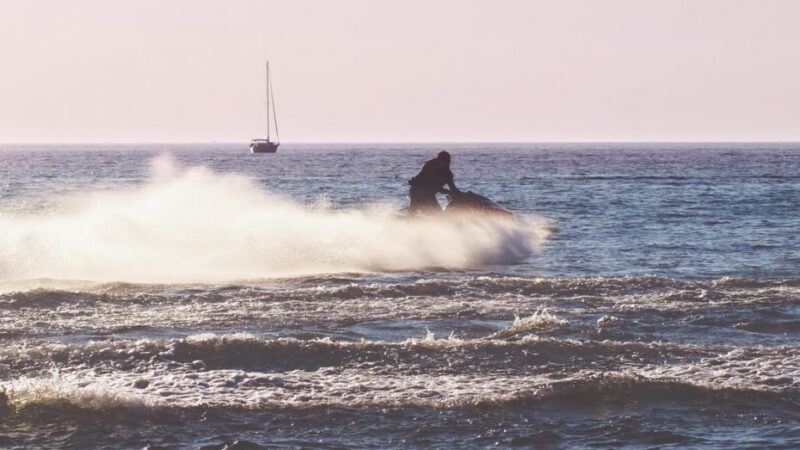Note: This is the first of a three-part series about boat wakes on the St. Croix River, which will also be published in the Country Messenger. Thank you to John Goodfellow, St. Croix Master Watershed Steward, for his research assistance.

The Lower St. Croix River is an extraordinary place. It’s a beautiful, wild, healthy 52-mile ribbon running along the edge of a major metropolitan area home to 3.6 million people. It has sandy beaches and shady banks, bald eagles and sturgeon.
It’s one of the most accessible yet primitive rivers in America.
“I should point out that this is one of the last remaining major rivers of the United States which lies within a major metropolitan area and is still relatively unspoiled,” said Senator Henry Jackson of Washington in October 1972 when protections for the lower river were being debated. “If comprehensive protection is not extended to the riverway, the St. Croix will eventually become one more city river, its waters poisoned with pollution, its shorelines gutted with indiscriminate development.”
Comprehensive protection was extended, and today the river remains relatively unspoiled. That’s why it’s beloved by many people, who come to swim, paddle, fish, watch wildlife, and go boating.
The fact that many different people can enjoy it in many different ways is one reason the St. Croix is special. There is big Lake St. Croix appropriate for big boats and bigger wakes. There are channels between the Dalles and Stillwater that are perfect for a pontoon or jon boat, and places only suited for canoes or kayaks.
A 2002 Comprehensive Management Plan developed by the National Park Service and Wisconsin and Minnesota Departments of Natural Resources to jointly manage the river sought to preserve the different areas for different uses.
“One of the unique characteristics of the Lower St. Croix National Scenic Riverway is the diversity of surface water recreational experiences users can find in a relatively small area, ranging from quiet solitude to faster or more social experiences,” the agencies wrote in 2002. “Under the preferred alternative, river users would be assured of finding opportunities to engage in a variety of recreational experiences far into the future.”
Now, five decades after it was designated Wild and Scenic by Congress, we are seeing how the river’s popularity can make balancing different uses more difficult, and how the accumulated impact of visitors can cause long-term harm.
Washing away the river
Boat wakes are one risk to the river’s long-term health, and its value as a National Park. The waves from powerboats can cause substantial erosion, and affect the very qualities other visitors are seeking. Restrictions are in place, but often ignored. Information posted on boat landings is either absent or inconsistent.
So it’s likely that many boaters do not know, understand, or remember the varying wake regulations on different stretches, nor the damage done by waves repeatedly hitting the St. Croix’s soft shorelines — so the problem persists. Some river users have also noticed an increase in more and bigger boats using the river in areas intended for low-impact activities.
The issue was identified as a concern in the 2002 plan, but enforcement has been difficult.
While the management plan essentially lays out the law of the land (or water, in this case), river use has changed significantly, including an ever-increasing number of visitors which amplify the impacts of changing uses.
Enforcement efforts have struggled to keep up.
“The Cooperative Management Plan contemplated a higher level of involvement in managing surface water recreation that has been the case,” says Buck Malick of Hudson, who was involved in the plan’s development. “We did not anticipate the reductions in budget and staff resources that occurred in recent times.”
St. Croix 360 is seeking to help spread information about boat wakes to educate river users and seek solutions. It starts with personal responsibility of knowing and following the rules, and hopefully better understanding will prevent further conflicts.
Many rivers in one

The 2002 plan essentially described what different parts of the lower river are intended for.
The lower river runs from the hydroelectric dam at Taylors Falls to the confluence with the Mississippi at Prescott. This stretch is essentially broken into three other sections, with different rules and authorities. The first 23 or so miles from the dam to the Arcola Sand Bar is designated Scenic, the five miles below that to Stillwater are Moderate, and the final 23 miles to the Mississippi are Active Recreational.
The Scenic and Moderate sections are managed by the National Park Service, while the lower 25 miles are managed by the DNRs of the two states.
Wakes on the river below Stillwater have been the subject of significant debate the past couple years, with new no-wake zones proposed. Boats designed for wakeboarding and other tow-behind water sports are a particular problem on the big water. Two people were reported injured earlier this summer when their boats hit large wakes.
While wakes have become a problem along the whole lower St. Croix, the section designated Scenic is where they are most out of place. The river from Stillwater south is meant to be active, while the northern section is intended for going with the flow.
Keeping it quiet

This section is largely undeveloped, especially the broad floodplains that separate braided river channels. It’s rich with wildlife, and can offer exceptional solitude.
It’s a much different river, with its own sets of standards.
Based on scientific study and official regulations, boat speeds between Taylors Falls and Arcola should be slow, and wakes nearly non-existent, to preserve the stretch’s wild and peaceful character. (Note: Learn more about the science behind the rules in part two of this series.)
The main channel is designated as “Quiet Waters,” for recreational uses that leave the surface of the river “largely undisturbed” and speeds are to be kept low. Backwater areas in this stretch are designated as “Natural Waters,” which means low speeds and the surface of the water should be “undisturbed.”
But that is often not the case, and it’s causing the types of conflicts that earlier efforts were intended to prevent. The majority of visitors to this area, who seek out the river’s peace and quiet, often have it disrupted.
Seven landings that provide primary access to this stretch of river present conflicting messages about what the rules are. With two states and the National Park Service involved, it can all seem confusing and sometimes contradictory.

Before authorities increase enforcement efforts, educational efforts are increasing. It is hoped that greater awareness will lead to better behavior voluntarily. Keeping
“In my opinion, the boast are getting bigger and moving faster than they used to,” says Randy Ferrin of Scandia.
Ferrin was the Saint Croix National Scenic Riverway’s Chief of Natural Resources from 1994 to 2005, which means he was working at the National Park when boat speeds and wakes were being discussed and was involved in putting a plan in place to manage the issue.
Despite knowing the complicated process of working with multiple government agencies and stakeholders, Ferrin puts the question pretty simply.
“This is a wild and scenic river, why not slow down and enjoy it and allow others to enjoy it too?” Ferrin asks.
Coming up:
- What wakes do — A study in the 1990s showed how wakes are washing away beloved river islands.
- Rules of the river — Current restrictions on speed and wakes are more complicated than “wake or no-wake.”





Recent Comments